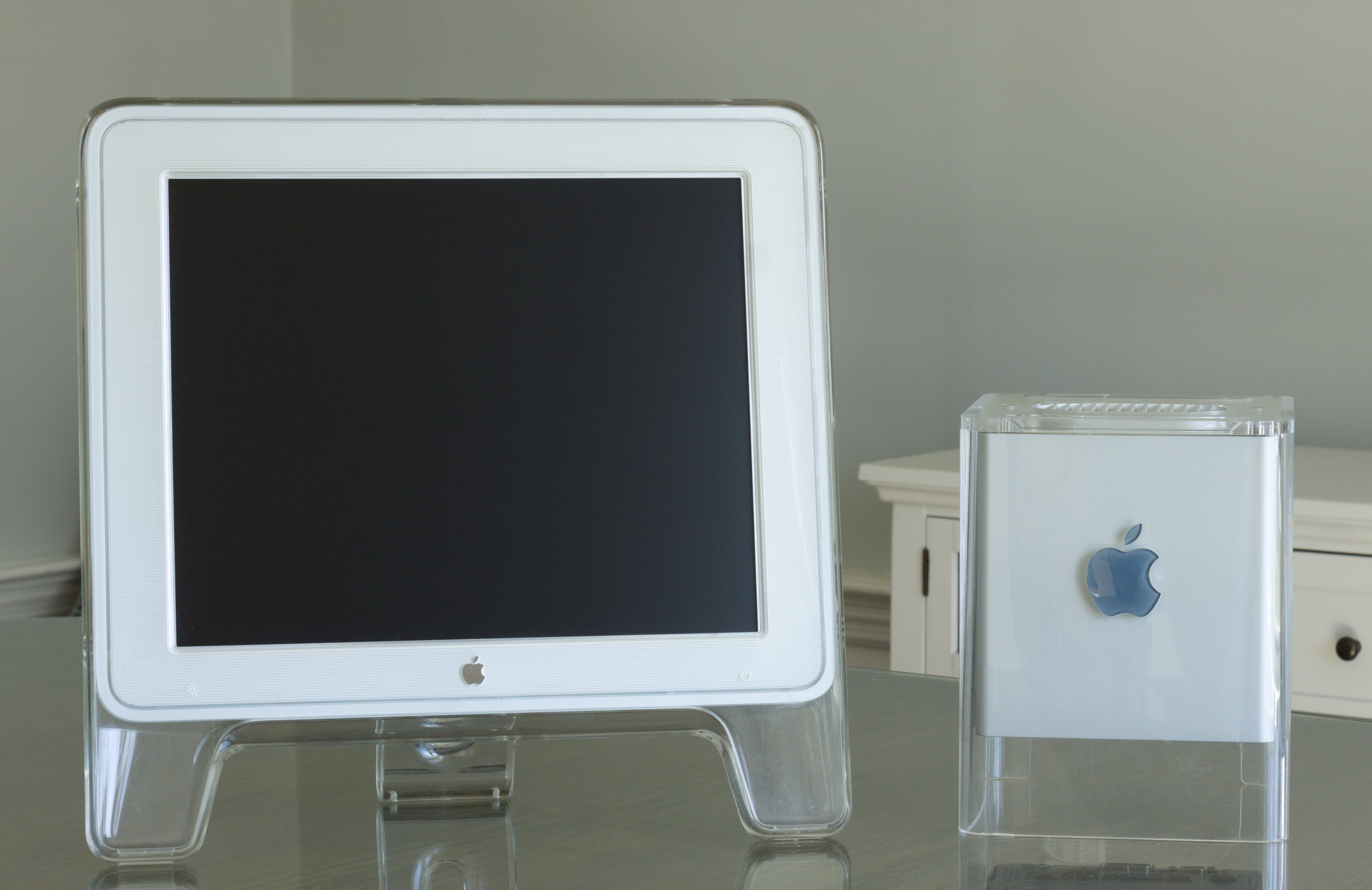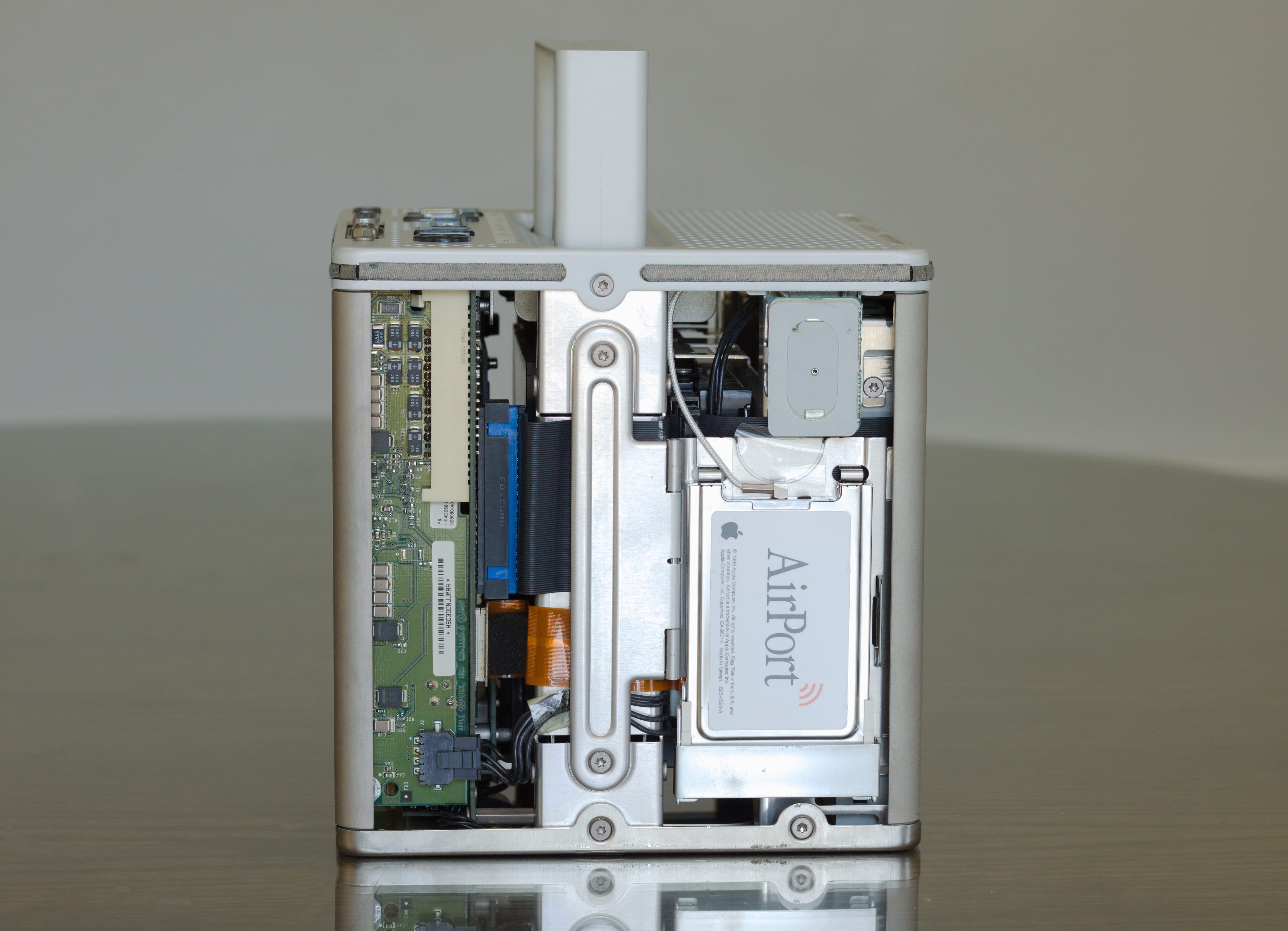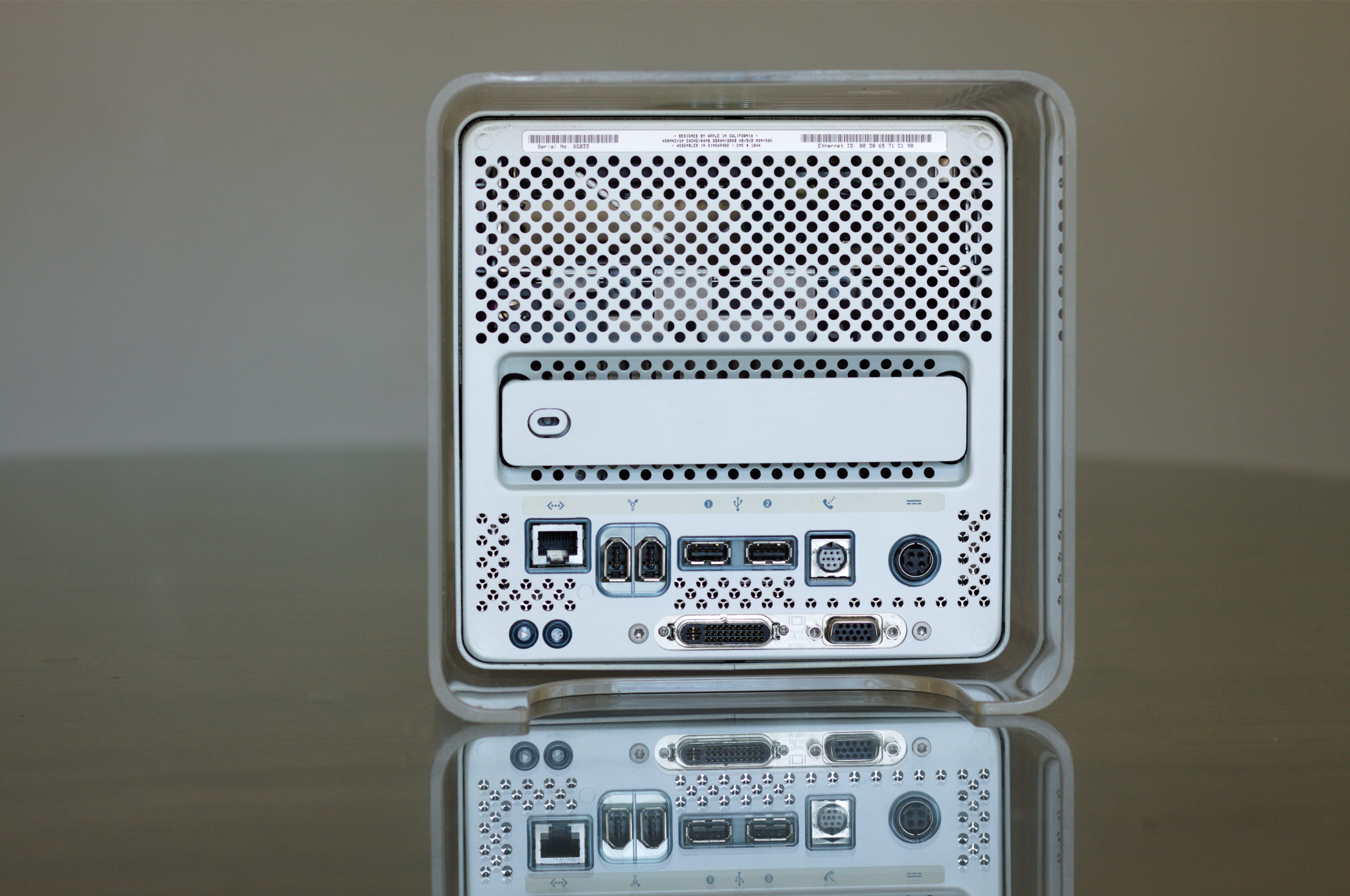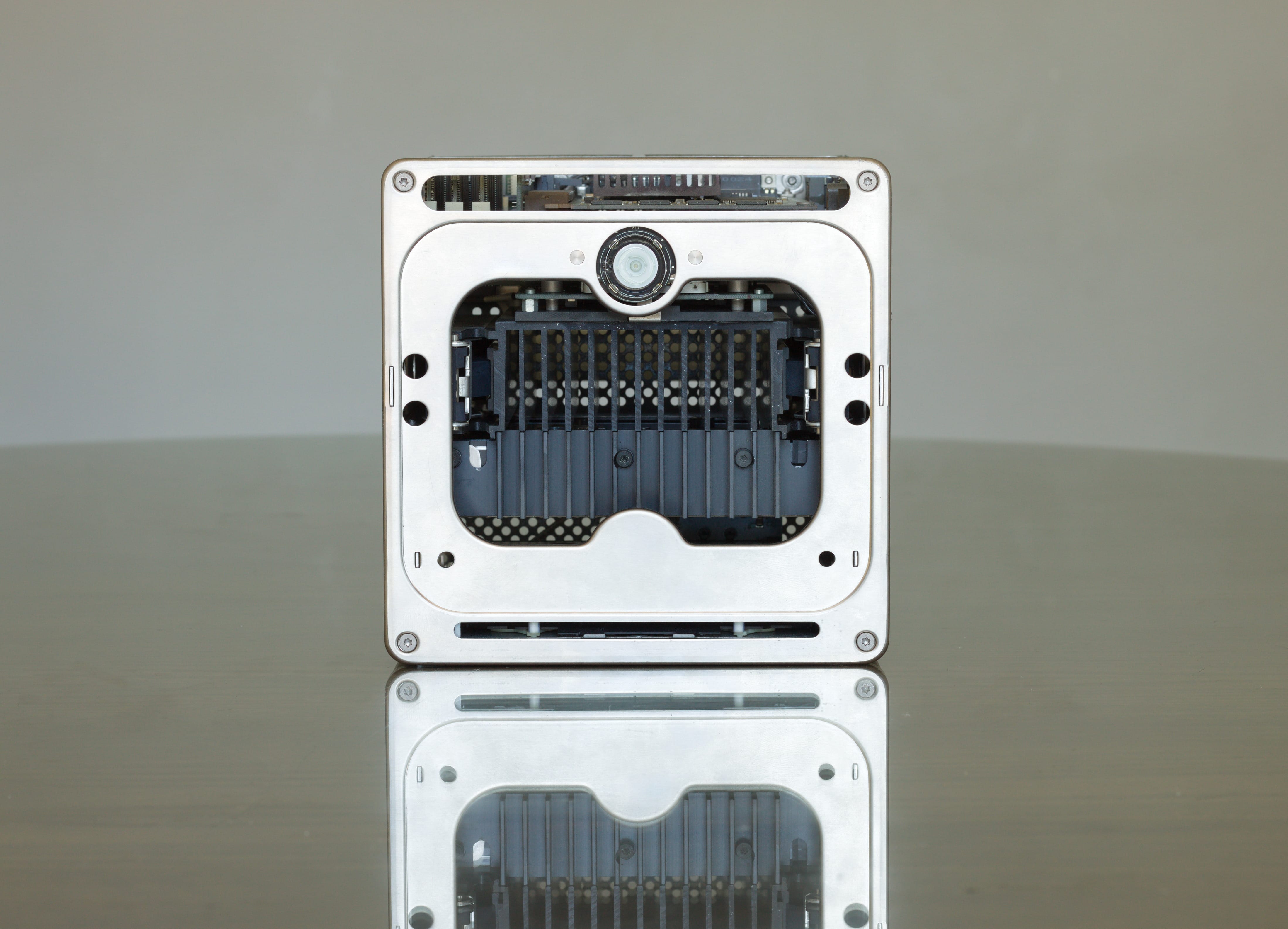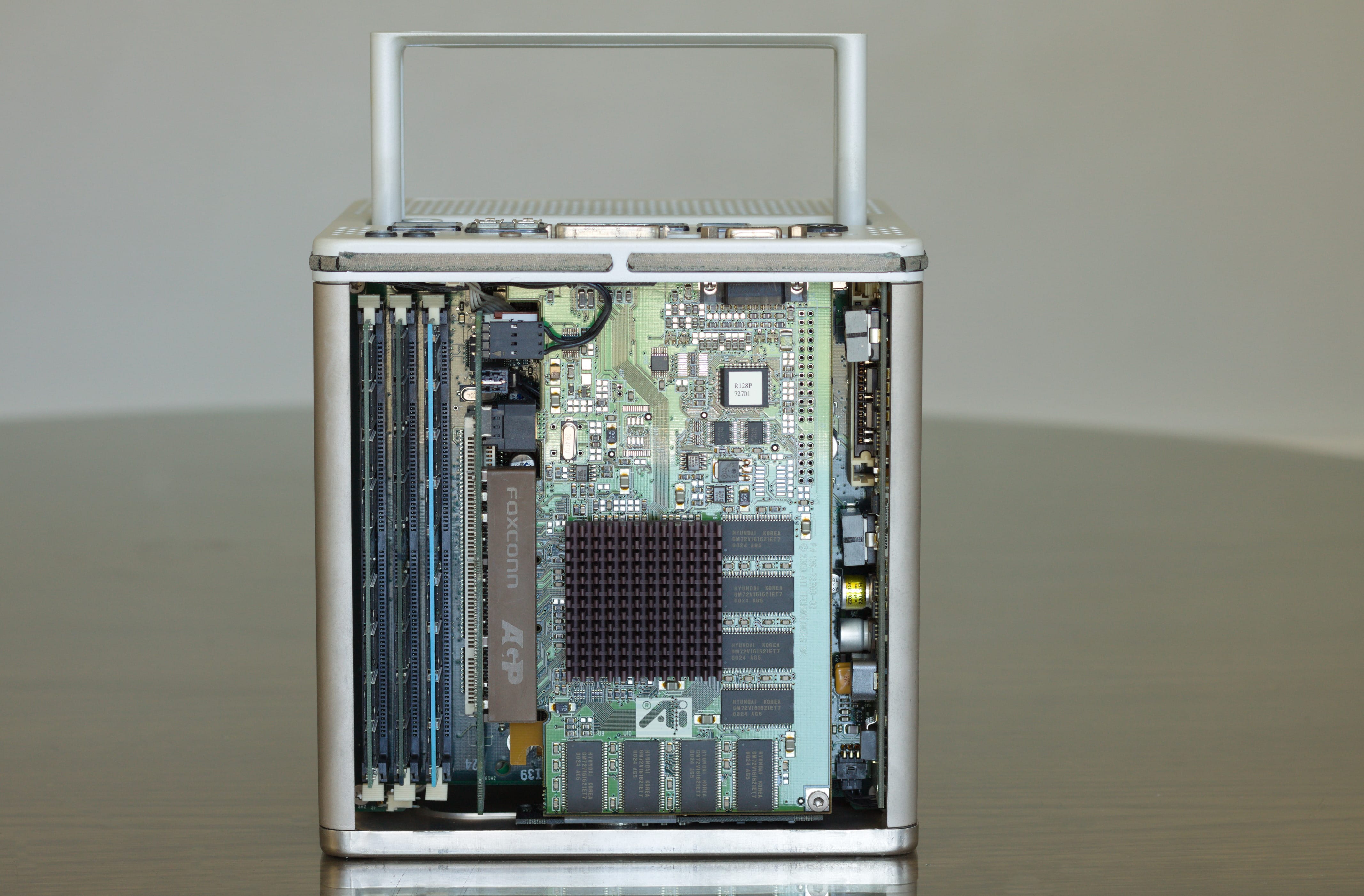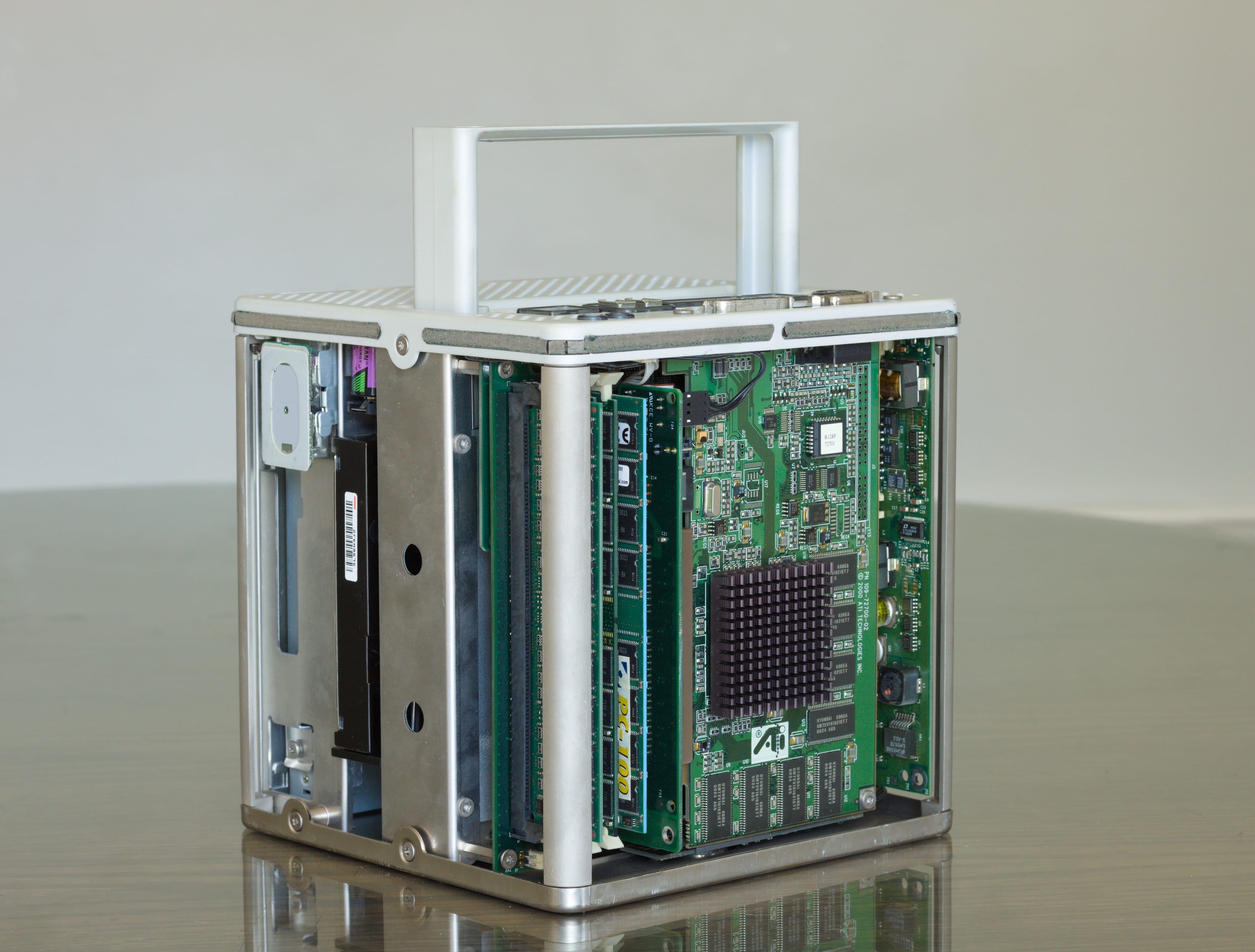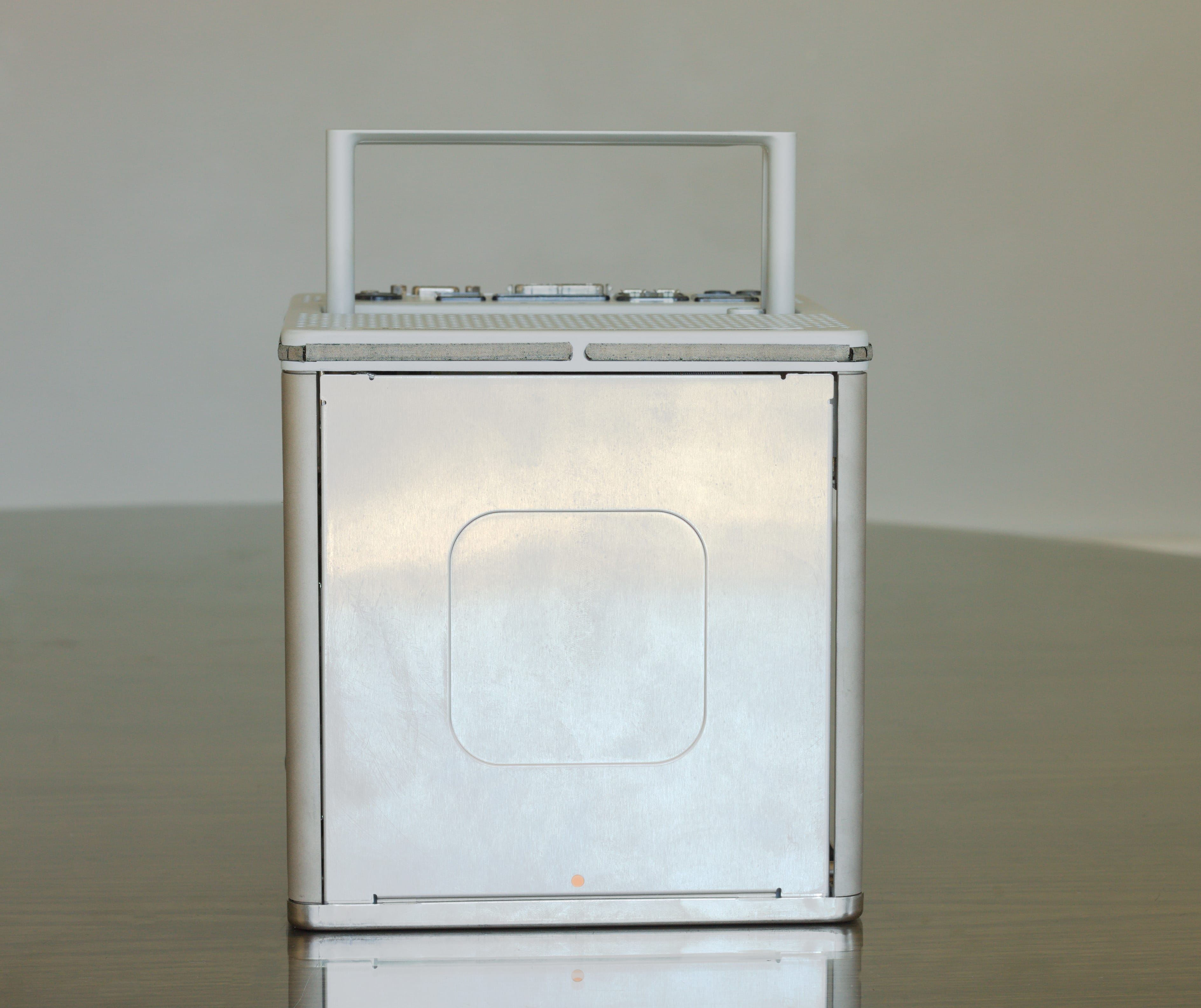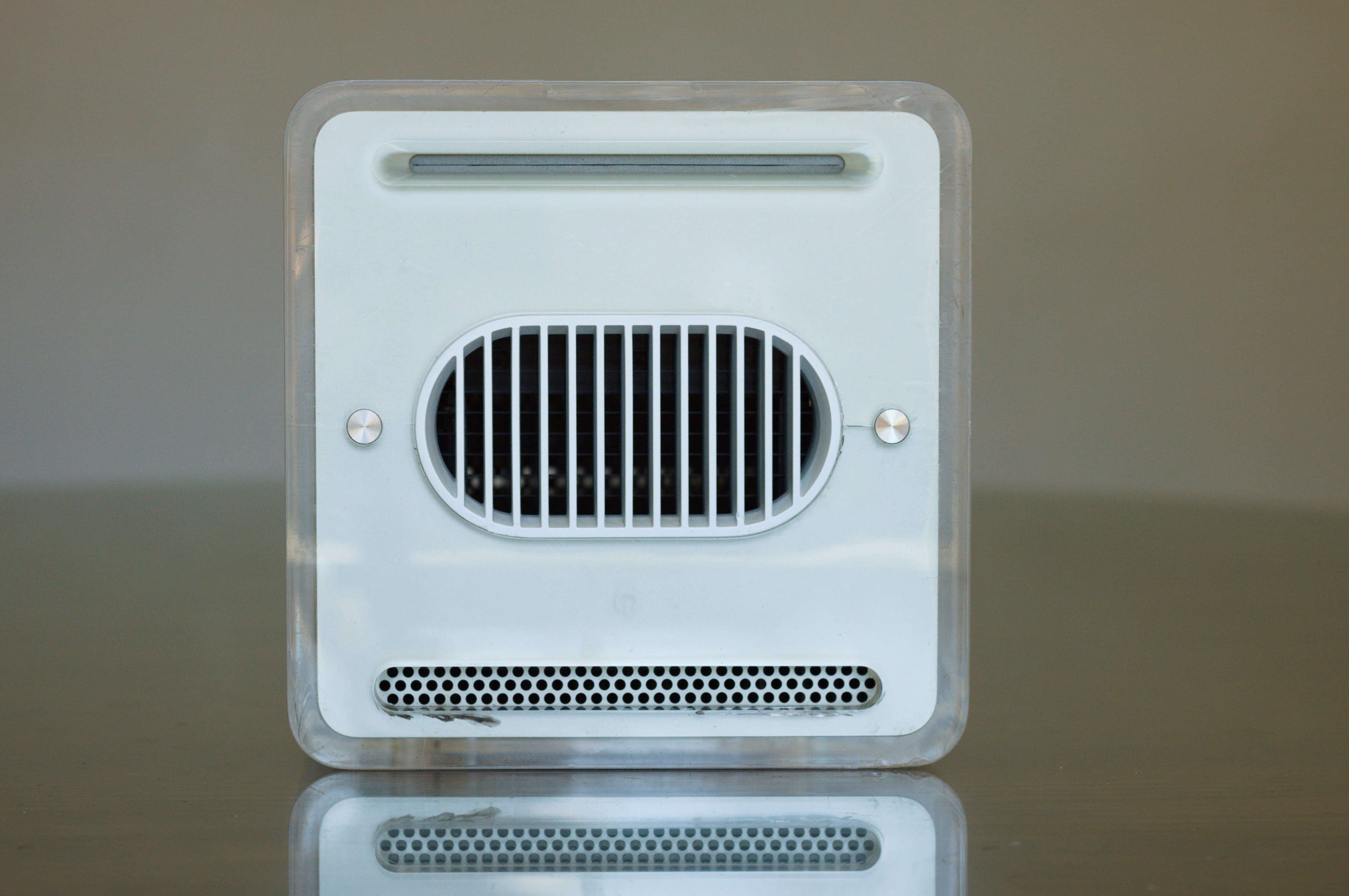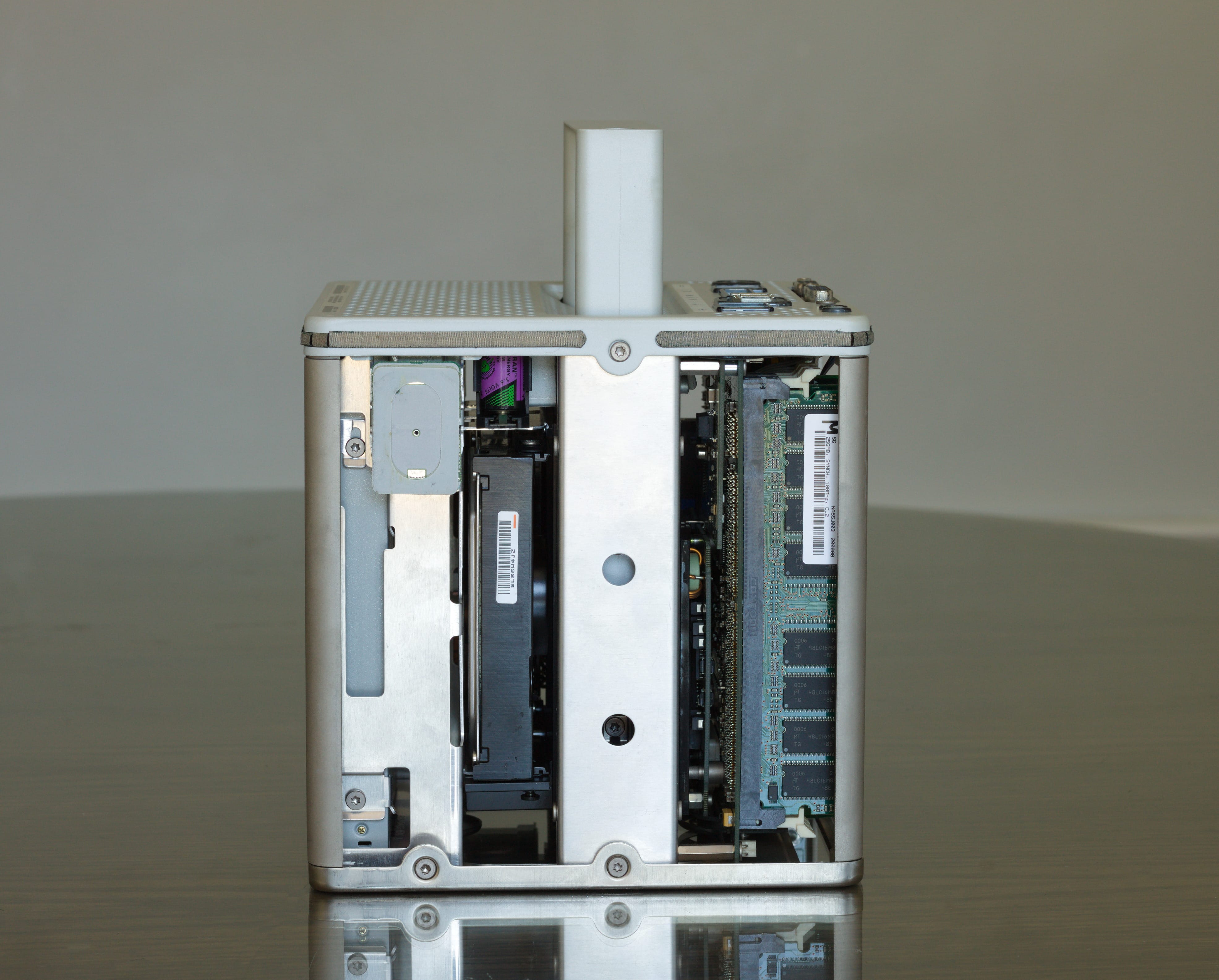The G4 Cube is simply the coolest computer ever,” said Steve Jobs, Apple’s CEO. “An entirely new class of computer, it marries the Pentium-crushing performance of the Power Mac G4 with the miniaturization, silent operation and elegant desktop design of the iMac. It is an amazing engineering and design feat, and we’re thrilled to finally unveil it to our customers.1
Though Apple CEO Tim Cook called the Cube “a spectacular failure” and the product sold only 150,000 units before being discontinued, it became highly popular with a small but enthusiastic group of fans. Macworld’s Benj Edwards wrote that the Cube was simply ahead of its time, with its appeal to a dedicated group of fans years after it was discontinued a testament to its visionary design. After its discontinuation the product fetched high prices from resellers, and a cottage industry developed selling upgrades and modifications to make the machine run faster or cooler. John Gruber wrote 20 years after its introduction that the Cube was a “worthy failure […] Powerful computers needed to get smaller, quieter, and more attractive. The Cube pushed the state of the art forward.” 2
Apple provided two choices of LCD studio monitors available in both 15" and 17" sizes. Apple’s last CRT monitor, the 17" Apple Studio Display CRT was also an available option. Apple provided two choices of LCD studio monitors available in both 15" and 17" sizes. Apple’s last CRT monitor, the 17" Apple Studio Display CRT was also an available option.
Apple Airport wireless networking which supports the 802.11b Wi-Fi protocol. Apple Airport wireless networking which supports the 802.11b Wi-Fi protocol.
The G4 Cube featured 1 10/100 RJ-45 Ethernet port, 2 FireWire ports, 2 USB ports, a 56K modem, Apple Display Connector (ADC) and VGA monitor ports. The Reset and Programmer/Interrupt buttons are also included. The G4 Cube featured 1 10/100 RJ-45 Ethernet port, 2 FireWire ports, 2 USB ports, a 56K modem, Apple Display Connector (ADC) and VGA monitor ports. The Reset and Programmer/Interrupt buttons are also included.
The G4 cube lacked two items that would surely be high on a list of items Steve Jobs and Jonny Ive hated putting in their products: fans and buttons. In the case of the G4 Cube, both decisions cut off this Mac’s nose to spite its face. The computer was never able to properly cool itself using its bottom-to-top convection chimney design, which caused plenty of component failures. And the touch-sensitive power button was far too easily triggered by a stray finger or even a passing disturbance in the force.3 The G4 cube lacked two items that would surely be high on a list of items Steve Jobs and Jonny Ive hated putting in their products: fans and buttons. In the case of the G4 Cube, both decisions cut off this Mac’s nose to spite its face. The computer was never able to properly cool itself using its bottom-to-top convection chimney design, which caused plenty of component failures. And the touch-sensitive power button was far too easily triggered by a stray finger or even a passing disturbance in the force.3
This G4 Cube has an ATI Rage 128 Pro with 16 MB of SDRAM. A Nvidia GeForce2 MX with 32 MB SDRAM, or an ATI Radeon with 32 MB DDR SDRAM were optional upgrades. This G4 Cube has an ATI Rage 128 Pro with 16 MB of SDRAM. A Nvidia GeForce2 MX with 32 MB SDRAM, or an ATI Radeon with 32 MB DDR SDRAM were optional upgrades.
The base model shipped with a 450 MHz G4 processor, 64MB of RAM, 20GB hard drive, an ATI Rage 128 Pro video card, DVD-ROM drive and 56k modem. This lowest-priced model cost $1799 in July 2000 (around $2800 in 2021). 4 The base model shipped with a 450 MHz G4 processor, 64MB of RAM, 20GB hard drive, an ATI Rage 128 Pro video card, DVD-ROM drive and 56k modem. This lowest-priced model cost $1799 in July 2000 (around $2800 in 2021). 4
One of the four sides of the interior core of the G4 Cube is an aluminum plate, used as a mounting surface for the computer’s components. One of the four sides of the interior core of the G4 Cube is an aluminum plate, used as a mounting surface for the computer’s components.
In addition to the product’s high price, the Cube suffered from other issues. Early buyers noticed cracks caused by the injection-molded plastic process, and the idea of a design-focused product having aesthetic flaws turned into negative public relations story for Apple, as well as turning off potential buyers for whom the aesthetics were its main appeal.2 In addition to the product’s high price, the Cube suffered from other issues. Early buyers noticed cracks caused by the injection-molded plastic process, and the idea of a design-focused product having aesthetic flaws turned into negative public relations story for Apple, as well as turning off potential buyers for whom the aesthetics were its main appeal.2
While this G4 Cube is stock (with the exception of additional memory), many fans of the G4 Cube have been integrating upgraded and more modern components into the confines of the 20x20x25 cm computer. While this G4 Cube is stock (with the exception of additional memory), many fans of the G4 Cube have been integrating upgraded and more modern components into the confines of the 20x20x25 cm computer.
Apple Newsroom, “Apple Introduces Revolutionary G4 Cube”, Apple Newsroom, July 19, 2000,
https://www.apple.com/newsroom/2000/07/19Apple-Introduces-Revolutionary/ Wikipedia contributors, “PowerMac G4 Cube”, Wikipedia, The Free Encyclopedia. March 16, 2021.
https://en.wikipedia.org/wiki/Power_Mac_G4_Cube Jason Snell, “20 Macs for 2020: #8 – Power Mac G4 Cube”, Six Colors, November 2, 2020,
https://sixcolors.com/post/2020/11/20-macs-for-2020-8-power-mac-g4-cube/ Benj Edwards, “The Cube at 10: Why Apple’s eye-catching desktop flopped”, MacWorld, August 12, 2010,
https://www.macworld.com/article/207101/cube-10thanniversary.html
